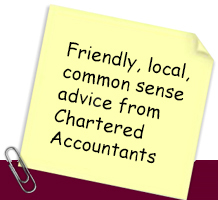The rising cost of living and high energy bills may mean that you are struggling to pay your January self-assessment tax bill. However, help is at hand and you may be able to set up a Time to Pay Arrangement which will allow you to pay what you owe in instalments.
Key dates
You must file your 2021/22 self-assessment tax return by midnight on 31 January 2023, and pay any remaining tax owing for 2022/23 by the same deadline. Where you need to make payments on account of your 2022/23 tax bill, the first payment on account is also due by 31 January 2023.
This note explains what you can do if you are struggling to pay the bill.
Nature of a Time to Pay Arrangement
A Time to Pay Arrangement is an arrangement with HMRC which allows you to pay a tax bill in affordable monthly instalments. The arrangement can cover all outstanding overdue amounts plus associated interest and, where applicable, penalties.
For self-assessment bills, you may be able to set up a Time to Pay Arrangement online. If this route is not available to you, you will need to contact HMRC to discuss whether you can agree an arrangement with them.
If you are aware that you are going to have problems paying your January tax bill in full, it is advisable to either set up a Time to Pay Arrangement online or contact HMRC before the end of January, rather than miss the deadline and then try and sort it out when HMRC chase you for payment.
It should be noted that if you are able to pay your tax bill in full, HMRC expect you to do so.
Set up an arrangement online
You can set up a Time to Pay Arrangement online if:
- you have filed your 2021/22 tax return;
- you owe less than £30,000;
- you are within 60 days of the payment date; and
- you plan to pay your debt off within the next 12 months or less.
To set up an arrangement online, you will need to log in to your Government Gateway account.
Agree an arrangement with HMRC
If you are unable to set up a Time to Pay arrangement online, you will need to get in touch with HMRC. If you are struggling to pay your January self-assessment tax bill, you should call HMRC’s Self Assessment Payment Helpline on 0300 200 3822. The helpline is open from Monday to Friday, from 8am to 6pm.
HMRC will take account of your income and expenditure and also what assets you have in working out what you can afford to pay. HMRC will not usually expect the payments under the agreement to be more than 50% of your disposable income. The length of the arrangement will depend on how much tax you owe. There is no upper limit on how long a Time to Pay Arrangement can last.
Payments will usually be made by direct debit.
If payments are missed, HMRC may take enforcement action to recover the tax owed.
Interest
Interest is charged on tax debts included in a Time to Pay Arrangement from the due date until the debt is paid.
Late payment penalties are not charged if the arrangement is set up before the tax is late.
If you need help with any of the issues raised above please call us on 01242 370298.


